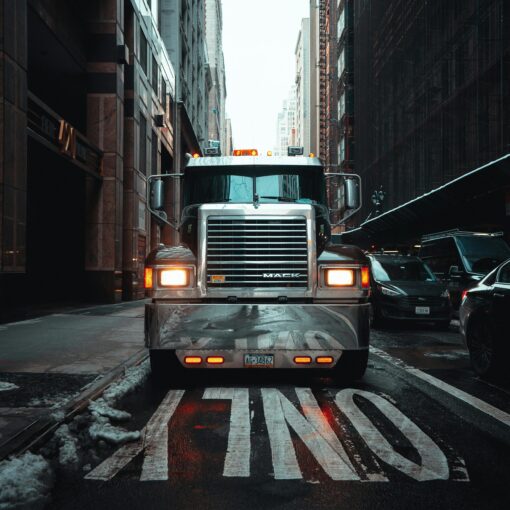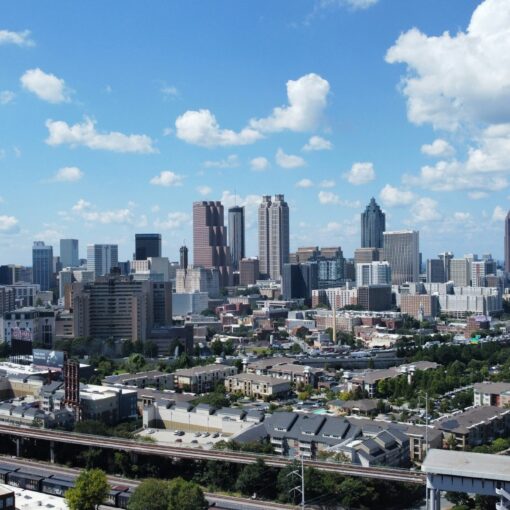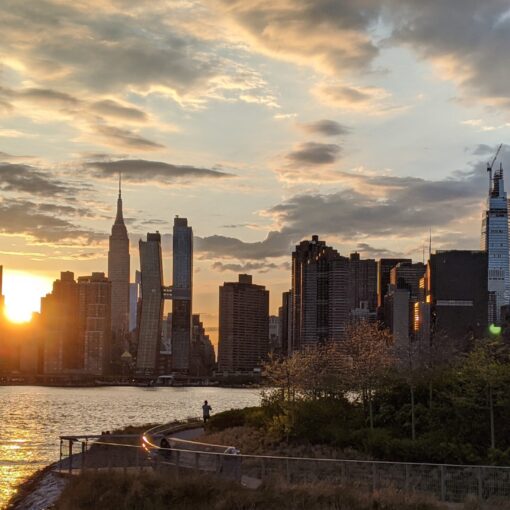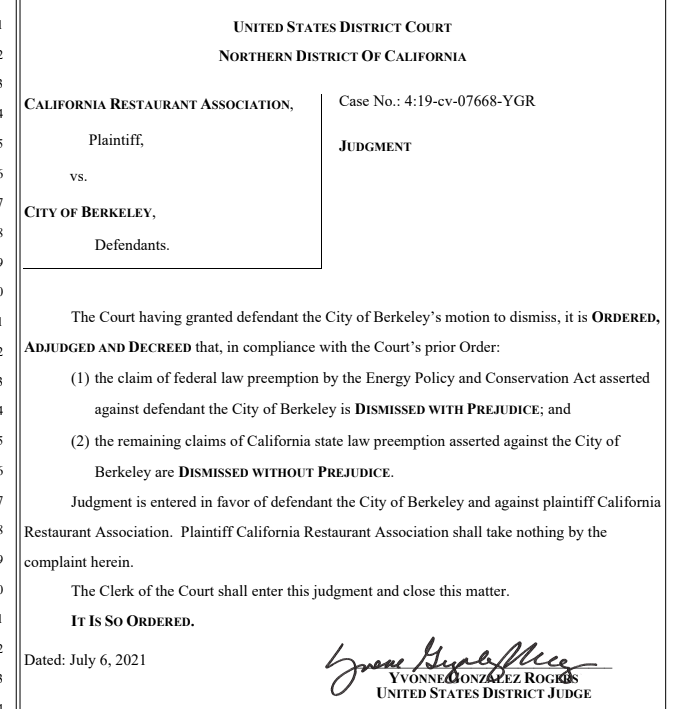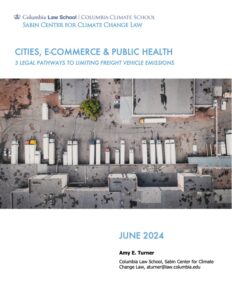 A new Sabin Center white paper is linked here.
A new Sabin Center white paper is linked here.
In recent years, cities have become increasingly defined by e-commerce – the sprawling network of goods delivery from central warehouses to neighborhood distribution centers to residents’ front doors. This growing network of warehouses and the freight vehicles that serve them contribute significantly to a community’s greenhouse gas emissions and exposure to harmful pollutants like nitrogen oxides, carbon monoxide and particulate matter. Moreover, so-called last-mile delivery warehouses (or distribution centers) are proliferating, largely in low-income communities and communities of color, where residents are exposed to increasing traffic, pollution, and harmful health impacts.
While a handful of cities have pursued approaches to lessening tailpipe emissions from freight vehicles, such as through electric vehicle and cargo e-bike pilot programs, there is a clear gap in regulating the emissions attributable to e-commerce warehouses and the vehicles that enter and exit them. In a new white paper published today, I discuss why cities have had difficulty limiting freight vehicle emissions and explore legal pathways forward.
Tools with which to regulate emissions from freight vehicles have eluded local governments, in large part because federal law preempts many state and local vehicle standards. The Energy Policy & Conservation Act (EPCA) preempts state and local laws and regulations “relating to fuel economy standards or average fuel economy standards for automobiles.” The Clean Air Act (CAA) prohibits states and local governments from “adopt[ing] or attempt[ing] to enforce any standard relating to the control of emissions from new motor vehicles or new motor vehicle engines.” And the Federal Aviation Administration Authorization Act (FAAAA) preempts state and local laws “related to the price, route, or service of any motor carrier… with respect to the transportation of property.” While there are exceptions and limited workarounds, these three federal laws are a significant challenge for local governments to navigate.
The new Sabin Center white paper published today explores three broad approaches that local governments – or their states – might pursue in lessening freight vehicle emissions: (1) rules for drayage trucks within California’s Advanced Clean Fleets (ACF) rule; (2) site-based emissions standards for warehouses (also known as indirect source rules); and (3) zero-emissions delivery zones in which zero-emissions vehicles (ZEVs) have priority access to loading and unloading areas. Each of these options present legal complexities, but elements of them can be available to cities looking to control emissions associated with e-commerce delivery. A few salient points on each approach follow.
Drayage truck regulation through California’s ACF Rule: In April 2023, the California Air Resources Board (CARB) adopted the Advanced Clean Fleets rule, which includes rules for drayage trucks operating in the state. The ACF implements a 2020 Executive Order that set a goal for 100 percent zero-emission drayage trucks in the state by 2035. The ACF rule requires the registration of all drayage trucks that operate in California in a CARB Online System. Through 2023, only trucks with a model year of 2010 or newer, and trucks with equivalent or better emissions controls, were allowed to register under the ACF rule. For diesel-fueled trucks registered before 2024, trucks are required to be retired (at least for purposes of use as a drayage truck in California) upon the earlier of when they reach 800,000 miles or when the engine is eighteen years old. Beginning in 2024, only ZEV trucks may be registered.
The ACF rule has been the subject of several lawsuits alleging preemption by EPCA, the CAA, and the FAAAA, and violation of the dormant Commerce Clause of the U.S. Constitution, none of which has been substantively resolved. California is also seeking a CAA preemption waiver from the U.S. Environmental Protection Agency (USEPA); USEPA has not yet ruled on the request, and CARB has paused enforcement of ACF while the request is pending. If USEPA grants the requested waiver to CAA preemption, other states would be eligible to adopt the rule. In the absence of a CAA preemption waiver, cities and states looking to enact a policy similar to ACF’s drayage truck rules would be well advised to carefully craft any such policies to avoid regulating “emissions from new motor vehicles or new motor vehicle engines,” as preempted by the CAA. The risk of preemption can be mitigated but not fully avoided.
Warehouse indirect source rules: In May 2021, California’s South Coast Air Quality Management District adopted Rule 2305, which implemented the Warehouse Actions and Investment to Reduce Emissions (WAIRE) Program, with the goal of reducing nitrogen oxides and particulate matter emissions from light- and heavy-duty freight vehicles at warehouse facilities. Warehouse operators are required to earn a certain number of “WAIRE Points” to meet their obligations under the WAIRE Program. Points can be earned in a number of ways including by acquiring or using ZEVs, reducing truck visits, installing ZEV charging or fueling infrastructure, and more. Alternatively, a warehouse operator and the District may agree to a custom compliance plan or the operator may pay a mitigation fee. Legislation contemplating a similar program has twice been introduced in New York State.
There are two broad approaches a city might take to avoiding preemption of a warehouse indirect source rule like WAIRE. First, working with the state, a warehouse indirect source rule might be incorporated into the state’s State Implementation Plan (SIP) as required by Section 110 of the CAA. Inclusion in a SIP would generally insulate a measure from preemption by other aspects of the CAA. Second, a city or other regulating jurisdiction can ensure enough optionality in compliance pathways such that no regulated party is effectively required (including through de facto mandates such as significant pricing differentials among compliance options) to acquire a ZEV. FAAAA considerations may also be at play.
Low-emissions delivery zones (ZEDZs): Finally, over the last several years, a small number of cities, including Portland, Oregon and Santa Monica, California, have advanced policies that limit the ability of non-ZEV delivery trucks to load or unload in certain areas of the city. Thus far, ZEDZs in the US have been largely voluntary; they offer incentives like priority loading zones and chargers for ZEV delivery vehicles and involve pilot approaches to low-emissions freight transport, but they do not require any particular action on the part of delivery vehicles. The zones are relatively small – from a few city blocks to a square mile or thereabouts – and non-ZEV trucks can drive through the zones and load or unload just outside of them. A third city, Los Angeles, has implemented curbside management loading zones, a less comprehensive approach that is effectively piloting limiting certain loading zones to use by ZEV trucks.
The lawfulness of these approaches – which can face preemption questions under the CAA, EPCA and the FAAAA – generally depends on whether the benefits offered to ZEV trucks or the disincentives to non-ZEV trucks can be considered mandates, incentives, or an in-between category of de facto mandates that effectively compel the purchase of ZEVs even if they do not expressly require it. State law can be more permissive here – cities often have authority under state law to pursue ZEDZ or curb management strategies through parking, stopping and standing rules, idling rules, signage rules, and more, though fewer of them have authority to toll (or charge for access to) public roads. The analysis under both federal and state law is fact-specific; the particular restrictions, techniques, and route will all play into whether a ZEDZ comports with applicable law.
While the federal law landscape can be murky, the CAA, EPCA and the FAAAA allow some room for local governments to place limits on or otherwise address freight vehicle pollution and other e-commerce harms. The legal tools available to address their impacts are necessarily evolving, and they offer significant promise, particularly for jurisdictions willing to calibrate an approach carefully to applicable legal frameworks and to their local context. For many cities, addressing the impacts of e-commerce is a necessity, through one approach or another. Last-mile delivery has once again laid the pollution burden with low-income communities and communities of color. Fortunately, cities have a range of imperfect but promising legal tools to mitigate its harm.
Amy Turner is the Director of the Cities Climate Law Initiative at the Sabin Center for Climate Change Law at Columbia Law School.


